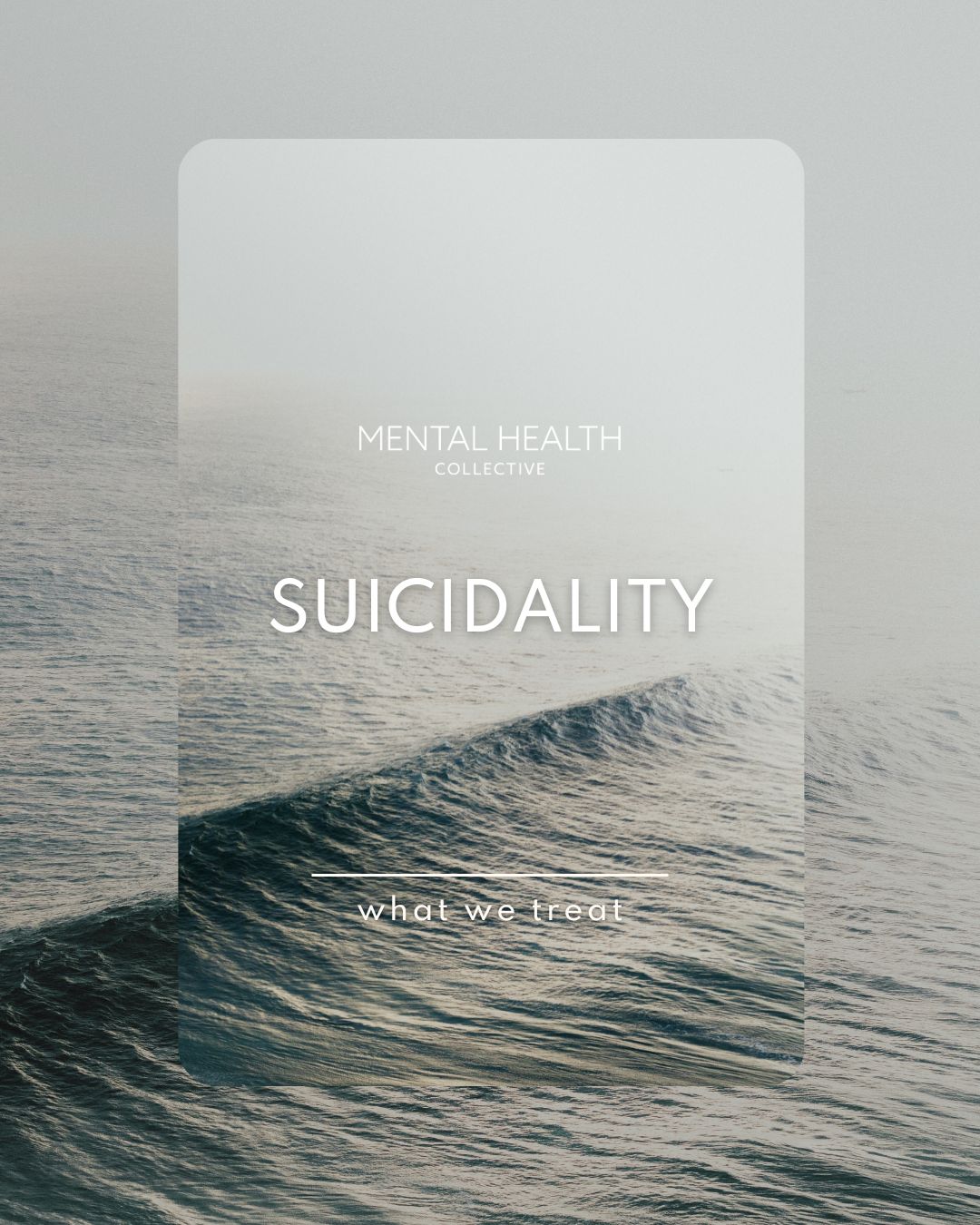Suicidality

WHAT IS SUICIDALITY?
Suicidality can be defined as a preoccupation with recurring thoughts of harming oneself, ending one’s life, or feelings that life is no longer worth living. This can manifest in:
Talking about suicide
Isolating from family and friends
Increased use of alcohol and/or other substances
Reckless /risky behavior
Developing a plan to kill oneself
Stockpiling drugs
Purchasing a firearm or other weapon
Suicide attempts
Suicidality is often a manifestation of underlying mental illness, or a sign of despair and hopelessness. Suicidal thoughts can range from brief, fleeting ideation to more pervasive desires to harm oneself. Someone who is expressing suicidal thoughts should be considered as experiencing a mental health crisis.
What Causes Suicidality?
Usually, there is no single factor that causes a person to experience suicidal thoughts. Often an individual is struggling with an underlying mental health condition. However, there can also be a major stressor or life event which, combined with other predisposing vulnerabilities, increases an individual’s sense of hopelessness and suffering.
Stressors or illnesses which may lead to suicidal thoughts in adults can include:
Loss of a loved one
Legal or financial problems
Medical problems such as chronic pain or terminal illness
PTSD
Addiction
Job loss
Major depression
For teens or children, stressors that may lead to suicidal thinking can include:
Loss of a loved one
Sexual or other abuse
Addiction
Bullying
Sexual orientation
Peer influences
Each child, adolescent, and adult is different in terms of their underlying vulnerabilities and triggers for suicidal thoughts. It is important to remember that not everyone who is suicidal has underlying depression; often suicidal acts are impulsive or in response to a life stressor.
The National Institute of Mental Health reports:
- The total age-adjusted suicide rate in the United States increased 35.2% from 10.4 per 100,000 in 2000 to 14.2 per 100,000 in 2018, before declining to 13.9 per 100,000 in 2019 and declining again to 13.5 per 100,000 in 2020. The total age-adjusted suicide rate in the United States in 2021 increased to 14.0 per 100,000.
- In 2021 , the suicide rate among males was 4 times higher (22.8 per 100,000) than among females (5.7 per 100,000).
Help for Suicidality
If you or someone you know is exhibiting signs and symptoms of suicidal thinking, it is critical to seek support immediately.
The first step in seeking support for suicidal ideation is getting professional help. Sources of professional help include suicide hotlines (988 Suicide and Crisis Lifeline), emergency rooms, or reaching out to your psychotherapist, primary care doctor, or psychiatrist. Treatment begins first with ensuring that the affected individual is in a safe, contained environment where they are unable to act on their suicidal thoughts. The next step is a comprehensive assessment by a mental health professional to understand the biological, psychological, and social components of someone’s suicidality. Finally, a treatment plan can be implemented.
Treatment often includes determining the most appropriate level of care (for example, outpatient, inpatient, residential), and then utilizing a combination of appropriate medications and psychotherapeutic approaches. If substance abuse is part of the challenge, detoxification and addiction treatment may also be needed. With proper treatment, suicidal thoughts and impulses often start to subside, and individuals begin to feel a sense of hopefulness once more.
The Mental Health Collective Can Address & Treat Suicidality
In many instances, The Mental Health Collective can help you or your loved ones with suicidal thoughts. Treatment at The Mental Health Collective begins with a full bio-psycho-social assessment by a board-certified psychiatrist and a licensed psychologist.
After your comprehensive evaluation, we will establish a diagnosis and treatment plan In the beginning, we will focus on stabilizing mood and impulses to self-harm, in order to ensure your safety. Our team will support you in implementing your treatment plan, including individual, group, family therapy, and medications when appropriate.
Your individualized treatment plan will also include healthy activities such as:
Yoga
Mindfulness and meditation practices
Nutrition
Exercise
Journaling
Massage therapy
Art
Our goal is to move beyond symptom remission at The Mental Health Collective and move towards Functional Recovery. We want to support you in building a life that is aligned with your core values, meaning, and purpose.
Overcoming suicidality can be likened to walking through a pitch-dark tunnel, one step at a time. If you continue to go forward, eventually a light appears at the end of the tunnel. Our caring and experienced mental health professionals and other support staff are here to walk through the tunnel with you. You don’t have to do it alone.
DO YOU HAVE A QUESTION?
Send our team a message or call 888.717.9355


